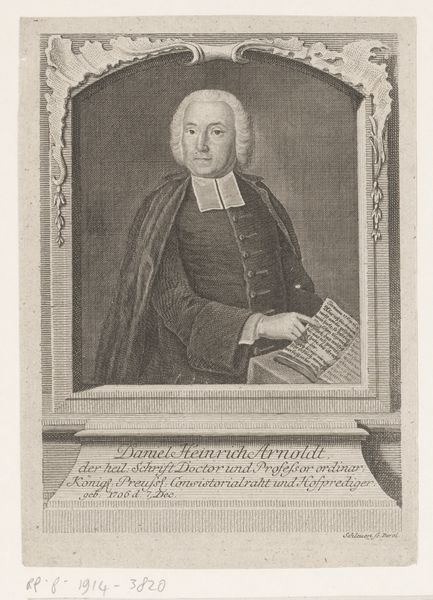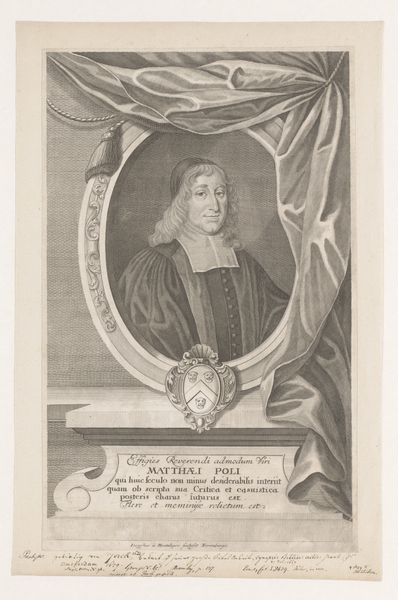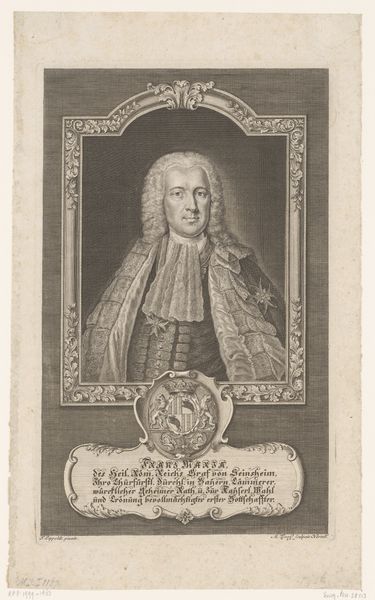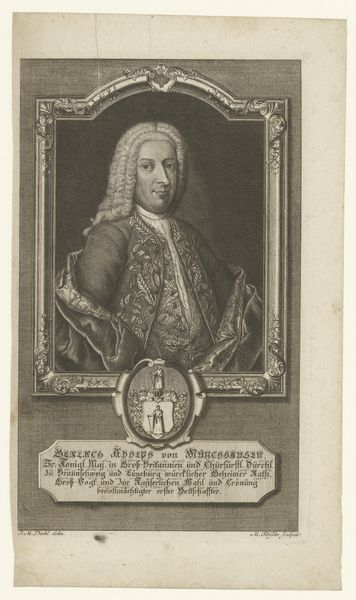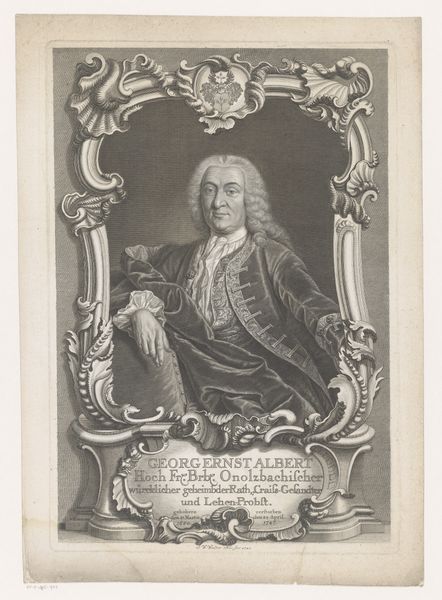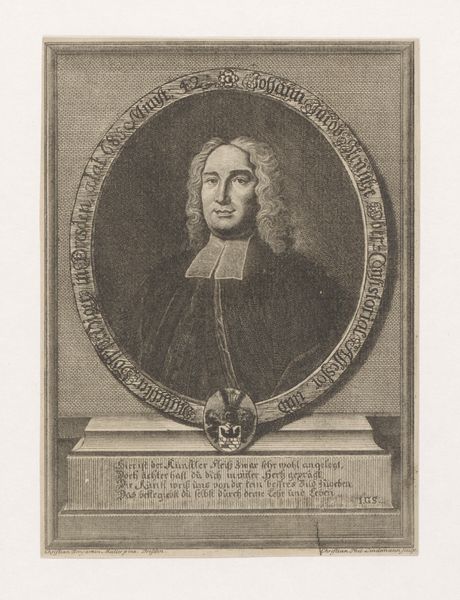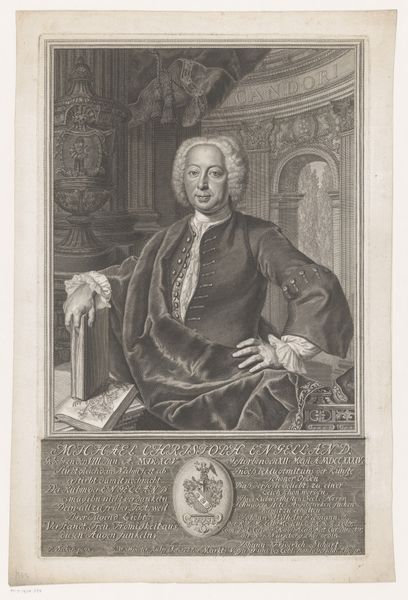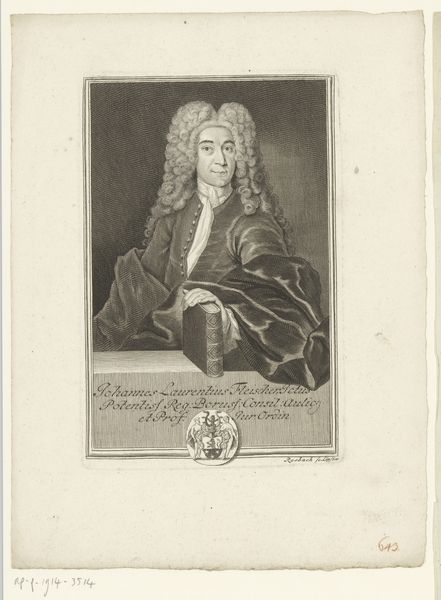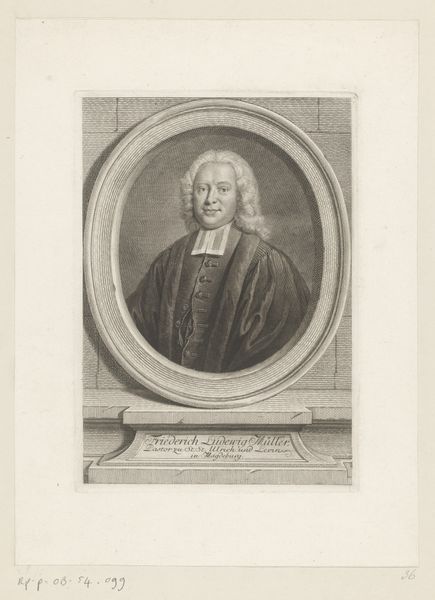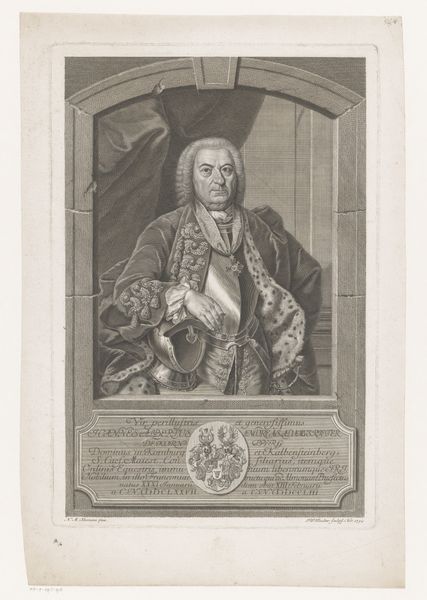
engraving
#
portrait
#
baroque
#
old engraving style
#
portrait drawing
#
history-painting
#
engraving
Dimensions: height 194 mm, width 117 mm
Copyright: Rijks Museum: Open Domain
Curator: This etching, residing here at the Rijksmuseum, is a portrait of Johann Friedrich Nolte. Johann Martin Bernigeroth created it in 1755. Editor: It possesses a rather stark elegance, doesn’t it? The limited tonal range accentuates the texture and detailed rendering of the sitter’s clothing and the drapery behind. There’s an intriguing interplay between formality and… a slight aloofness in his expression. Curator: Aloofness isn’t surprising given that, at the time, this Nolte served as Conrector of the Ducal School of Schöningen. Editor: The engraver certainly captures his station. Consider how the lines, though delicate, are deployed to model form. Observe also the compositional arrangement—the architectural element placing him in a proscenium, or above us, subtly reinforcing his authority. Curator: The composition situates Nolte centrally within an elaborate cartouche, a visual symbol underscoring the importance society gave to men of letters during the Baroque era. I think it also points to larger institutional mechanisms and the desire to record important members of educational institutions. Editor: Indeed. But zooming in closer on that same Baroque detailing – specifically that intricate scrollwork framing the inscription – the effect becomes almost dizzying. It fights with the relative clarity of the subject, disrupting the visual field with excessive ornamentation. Curator: Yet that very tension, perhaps, highlights a crucial social point. Such conspicuous embellishment wasn't merely aesthetic; it visually communicated the values and hierarchies underpinning 18th-century society. Consider, this was an era of rigid social strata and outward shows of status, with this image potentially serving as an idealized and somewhat manufactured image for wider consumption. Editor: A manufactured image, I concede. And a very well constructed one too, prompting deeper exploration of the strategies and artistic vocabularies underpinning Baroque portraiture as a whole. Curator: I would say it provokes thoughts around what, exactly, portraits like these accomplish in a broader societal context. They certainly have to reflect real people to some extent, yet this one has a strong propaganda element that deserves recognition.
Comments
No comments
Be the first to comment and join the conversation on the ultimate creative platform.
